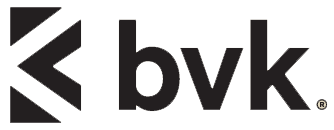The Brave New World of Corporate Social Responsibility is Here. Are You Ready?
BVK

Corporate Social Responsibility has changed dramatically in recent years. Gone are the days when a successful CSR program simply meant partnering with a safe, high-profile non-profit to help raise funds. Long-running cause programs like BMW’s Drive for the Cure and American Express’s Charge Against Hunger were hailed as best practice models for how CSR campaigns should be implemented.
Today, in a world of rising activism, social polarization and hyper-transparency, consumers are demanding more from the brands they buy. They expect them to do more than deliver a great product or service. They expect them to lead with purpose and take a stand on important social issues that matter to them – like climate change, poverty, social justice or gender inequality.
They want their brands to become brand activists. And if they don’t…if they choose to simply stand on the sidelines and be quiet about the causes their customers are passionate about, increasingly, they’ll pay for it at the cash register.
According to the Edelman 2018 Earned Brand Study, “64% of consumers choose, switch, avoid or boycott a brand based on its stand on societal issues.”
And nearly 9 in 10 consumers (86%) say they’re likely to purchase from a purpose-driven company. (2019 Porter Novelli/Cone Purpose Study)
Although brands like Nike, Ben and Jerry’s, Dove and Starbucks have understood this for decades, we’re now seeing a whole new wave of companies stand up and wear their values on their sleeves. And the shift is seismic, from brands like Gillette addressing the problem of toxic masculinity to REI announcing it will give back its $10 million Trump tax break and invest it all in fighting global warming to Dick’s Sporting Goods pulling assault rifles off it shelves in the wake of the Parkland shooting and Goldman Sachs announcing they will no longer handle IPOs for companies with all male boards.
Purpose is more than just a trend to the world’s leading brands. They understand the true meaning of standing up for those values that they believe in deeply and embed these beliefs into every aspect of their business and culture. They understand that enticing a consumer to fall in love with a brand depends on narrowing the psychological distance between the buyer and the product. And there is no better, faster or more deeply connective way to do that, than aligning with a common purpose that goes beyond the brand’s functional benefits. Because today’s consumers, are more “belief-driven” than “brand-driven.” Which means if you want to drive bottom line growth and build consumer loyalty, you need to lead with purpose.
What’s driving the shift from philanthropy to purpose?
In large part, there are two things driving this shift:
The rise in digital activism has touched off a wildfire of consumer activism and empowerment. Social movements like #MeToo, #BlackLivesMatter and #MAGA have used social media to fuel both their platforms, as well as this fundamental shift in the consumer mindset.
According to a Gartner Iconoculture survey, 63% of US consumers now engage in some form of consumer activism. This has had a profound impact on consumers’ expectations of what corporate social responsibility looks and feels like. Consumers no longer look at social responsibility as simply “what can I give.” But they want to know “what can I do?” They want to “participate” in the cause, and they want the brands they crave to be a partner in their effort to help make their voices heard.
The second reason? The bottom-line.
Brands that lead with their purpose simply grow faster and are more profitable than brands that don’t. An Accenture study in 2018 found that “Brands with a purpose set on improving our quality of life, outperform the stock market by 120%,” while Kantar reports that brands with a high sense of purpose have more than double the brand value of brands with low purpose.
According to Unilever CEO, Alan Jope, Unilever’s purpose-led brands (Sustainable Living Brands) now grow exponentially faster than Unilever non-purposeful brands – 69% faster in 2018 to be exact. That’s up 46% from the year before. They also deliver 75% of Unilever’s growth.
When Nike takes a stand, sales increase. After the infamous Nike Colin Kaepernick ad campaign ran two years ago, creating public outcry, sales still increased in the month after 31%. And Nike stock is up 15% in the last 14 months.
Even in the non-profit world, when BVK helped the United Way Worldwide shift their focus from a pure giving to advocacy-model and changed the tone of their marketing to aggressively stand up against crisis social issues, their donor satisfaction increased from 10% to 86%. And their annual giving rose 30%.
Capitalizing on this new growth opportunity
For those companies that haven’t fully-embraced this brave new world of using CSR, the real question then becomes what does one do to ready your brand to use CSR as a growth driver?
To start, strip away the conventional wisdom and forego typical best practices in the CSR space. Instead, find new inspiration from the people within your organization and the emerging best practices of companies like REI and even Unilever. To determine if you could be better capitalizing on this, ask yourself how well your organization is doing the following three things:
Be audacious. Ask yourself, would your mission statement inspire you to do business with yourself? Does it challenge the organization to stretch, grow and achieve bold ambitions? Somewhere along the line – and it happens to virtually every company – the organization gets caught up in the day-to-day business realities and forgets why it got into business in the first place. Now, instead of the inspiring focus on helping people live the greatest lives possible, the company’s sole focus gives way to outdated measures of success. Considering the low risk tolerance that come with success, and the growing scrutiny on compliance, it’s not surprising most companies fall victim to a deviated focus and eventually cultural obsolesce. But here’s the truth, in all aspects of business and life, you’re either moving forward or you’re moving backward – growing or dying. And after studying some of the world’s best performing companies, one thing is consistently attributed to growth – an intense focus on a mission with bold and aggressive motives. Are the motives behind your mission pushing the organization to grow while the market is good, or are they holding it back? Timid motives lead to meager performance. Worse yet, organizational mediocrity. To be great and to achieve sustainable growth, companies must stand for something compelling. IBM exists to build a smarter planet, Google exists to immediately satisfy every curiosity, Dove exists to celebrate every woman’s unique beauty, and the list goes on. If you want to leave a legacy of success and impact behind, spend the time to rediscover your company’s bold mission, make sure it’s centered on your core values, and use it as your primary navigational tool when making important decisions.
Ditch the “business as usual” set of CSR best practices. Obviously, observing and even modeling the best strategies and behaviors of your competitors is important. But, if you’re adopting and applying them religiously, they’re only making your company and your value proposition look completely self-serving. As one famous business coach said, “If you do what everyone else does, and you do it better than everybody else, you get a tiny competitive advantage. But, if you do something no one else is doing in your space and focus on offering overwhelming value, you get a gigantic advantage.”
You can begin to apply this by creating a better balance between the application of proven strategies and the development of new best practices that give consumers powerful reasons to support your success instead of your competitors. The best way to achieve the latter of those two things is by pursuing a deep understanding of your employees and ideal customer – not just their functional preferences, but their life’s guiding principles as well. What motivates them? What do they fear? What are their beliefs, convictions, needs and desire? If you do this, and if you are relentless about finding ways to develop a CSR strategy that aligns with those ideals, you will add more value to their life and extraordinary things will happen. Innovation will permeate from every part of the organization creating new and differentiating “best practices”. Talent retention and acquisition will increase because of your employees’ ability to contribute and feel significant. Customers will want deeper and more loyal relationships with you. Marketing spend can be brought down while organic growth accelerates.
Envision the way you operate with fresh eyes. Does your current operating model align with and complement your organization’s ideals and CSR practices? Or, can you find points of friction preventing dynamic growth and/or efficiency? Are your existing strategic initiatives supporting social responsibility and leading to new opportunities, or are they simply boxes to check that conflict with corporate evolution? Conventional operating model strategies are siloed, constrictive and consistently stifling growth, yet most institutions avoid making changes here. Yes, there are compliance and regulations to contend with, but think about it, no CSR strategy or tactical push will allow you to fully capitalize on the current market opportunity if your operating model is fundamentally designed to resist it. The successful companies of the future will creatively adapt their operating structure to better leverage the benefits of social responsibility while blowing up the boundaries preventing their business units from working together to provide greater value.
If you want to learn more about how BVK can help maximize your current CSR strategy or work with you to develop a more transformative CSR movement, contact [email protected].
